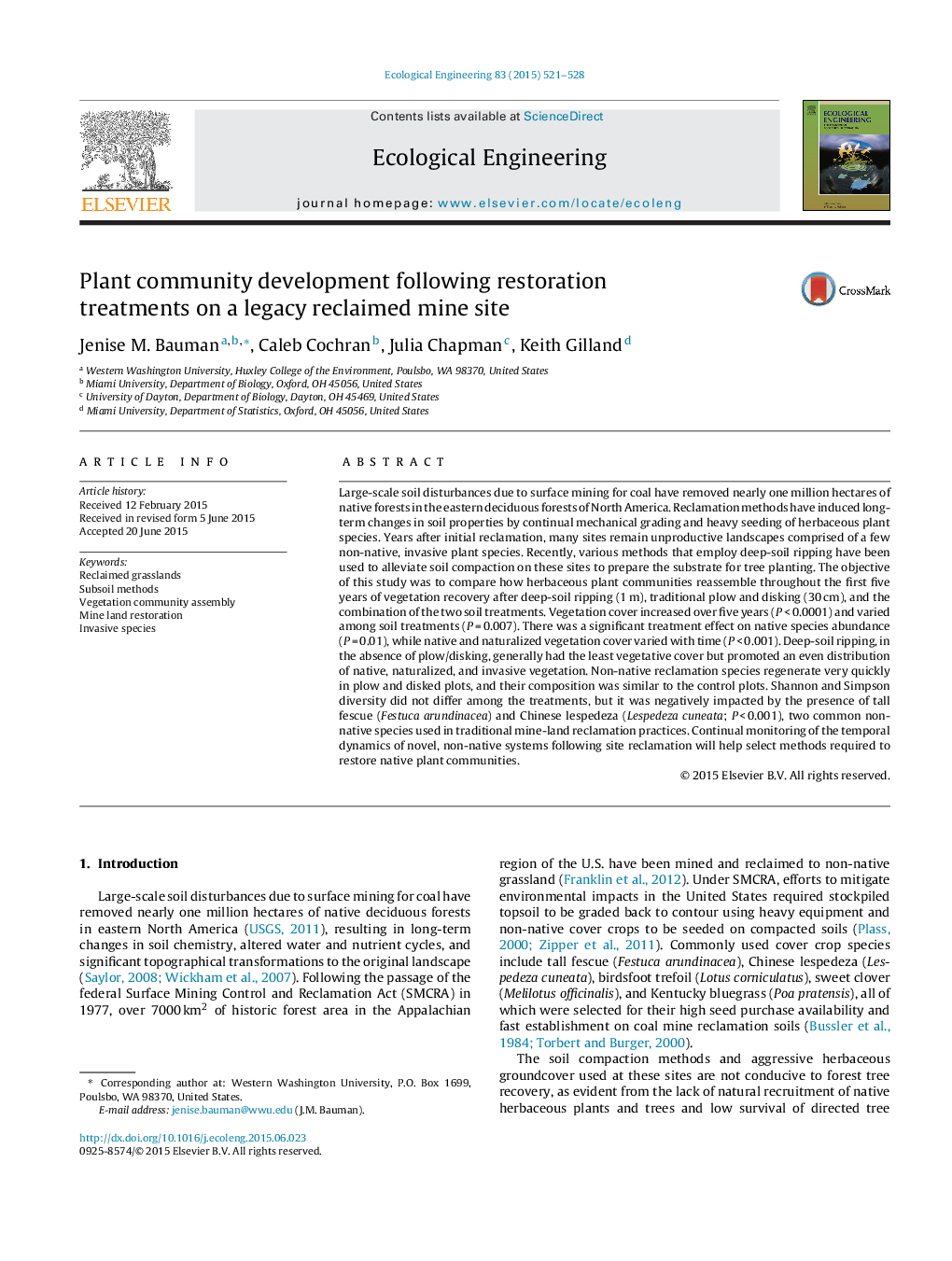| کد مقاله | کد نشریه | سال انتشار | مقاله انگلیسی | نسخه تمام متن |
|---|---|---|---|---|
| 4388904 | 1618016 | 2015 | 8 صفحه PDF | دانلود رایگان |
Large-scale soil disturbances due to surface mining for coal have removed nearly one million hectares of native forests in the eastern deciduous forests of North America. Reclamation methods have induced long-term changes in soil properties by continual mechanical grading and heavy seeding of herbaceous plant species. Years after initial reclamation, many sites remain unproductive landscapes comprised of a few non-native, invasive plant species. Recently, various methods that employ deep-soil ripping have been used to alleviate soil compaction on these sites to prepare the substrate for tree planting. The objective of this study was to compare how herbaceous plant communities reassemble throughout the first five years of vegetation recovery after deep-soil ripping (1 m), traditional plow and disking (30 cm), and the combination of the two soil treatments. Vegetation cover increased over five years (P < 0.0001) and varied among soil treatments (P = 0.007). There was a significant treatment effect on native species abundance (P = 0.01), while native and naturalized vegetation cover varied with time (P < 0.001). Deep-soil ripping, in the absence of plow/disking, generally had the least vegetative cover but promoted an even distribution of native, naturalized, and invasive vegetation. Non-native reclamation species regenerate very quickly in plow and disked plots, and their composition was similar to the control plots. Shannon and Simpson diversity did not differ among the treatments, but it was negatively impacted by the presence of tall fescue (Festuca arundinacea) and Chinese lespedeza (Lespedeza cuneata; P < 0.001), two common non-native species used in traditional mine-land reclamation practices. Continual monitoring of the temporal dynamics of novel, non-native systems following site reclamation will help select methods required to restore native plant communities.
Journal: Ecological Engineering - Volume 83, October 2015, Pages 521–528
